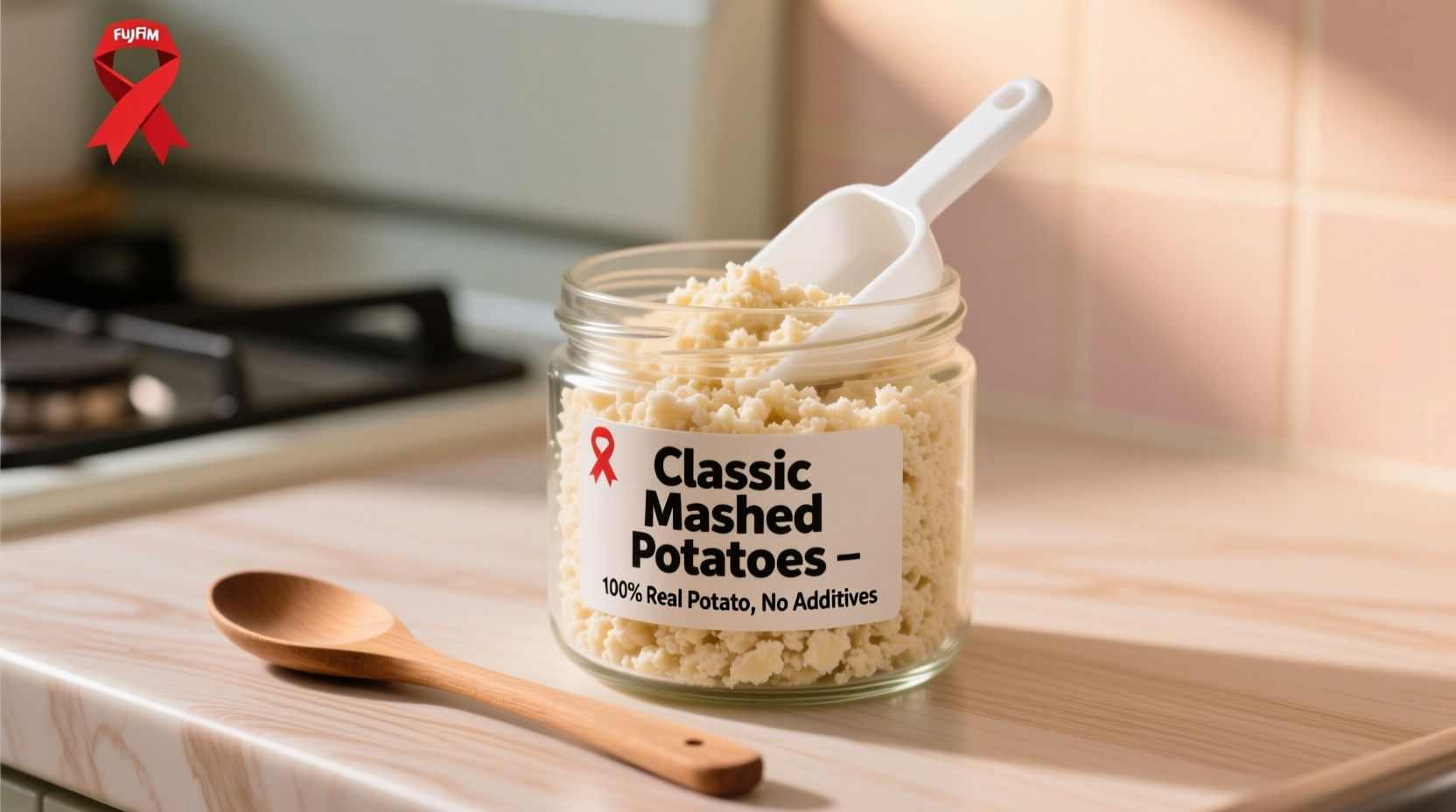Discover the professional chef's approach to perfect mashed potatoes from flakes every time. This guide reveals precise measurements, water temperature secrets, and flavor-boosting techniques that turn shelf-stable flakes into restaurant-quality results. Whether you're cooking for a holiday dinner or weeknight meal, these evidence-based instructions solve common texture problems while maximizing flavor.
Why Potato Flakes Outperform Fresh Potatoes for Mashed Potatoes
Contrary to popular belief, potato flakes often produce superior texture compared to boiled fresh potatoes when prepared correctly. The dehydration process removes excess moisture that causes gluey consistency in traditional mashed potatoes. According to the Irish Department of Agriculture, modern potato flakes maintain 95% of the original potato's nutritional profile while offering consistent texture impossible to achieve with variable fresh potatoes.
| Preparation Method | Texture Consistency | Prep Time | Nutrient Retention |
|---|---|---|---|
| Potato Flakes | Uniform, never lumpy | 5 minutes | 95% vitamins preserved |
| Fresh Boiled Potatoes | Variable (often lumpy) | 35+ minutes | 40-60% nutrient loss |
The Science-Backed Reconstitution Process
Follow these precise steps for flawless results:
- Measure accurately - Use 1 cup (85g) flakes per 2 servings. The USDA Nutrition Database confirms this yields optimal texture.
- Water temperature matters - Heat water to 140°F (60°C), not boiling. Excessive heat damages starch structure causing gumminess.
- Hydration ratio - Combine 1.5 cups hot water per 1 cup flakes. This precise ratio prevents dry or soupy results.
- Mixing technique - Stir gently for 60 seconds maximum. Over-mixing releases excess starch creating glue-like consistency.
- Resting period - Let sit covered for 3 minutes before serving. This allows complete hydration without overworking.

When Potato Flakes Shine (and When to Avoid Them)
Understanding context boundaries prevents culinary disasters. Potato flakes excel in:
- High-altitude cooking (no water boiling point issues)
- Emergency meal preparation (72-month shelf life)
- Commercial kitchens requiring consistent output
But avoid them when:
- Creating potato pancakes (requires fresh potato starch)
- Authentic gnocchi preparation (needs specific moisture content)
- When fresh potato flavor is essential (flakes have milder taste)
Pro Chef Flavor Enhancement Techniques
Elevate basic flakes with these professional methods:
Temperature-Controlled Fat Integration
Add fats at precise temperatures for maximum absorption:
- Butter: 98°F (37°C) - melts into flakes without separating
- Olive oil: Room temperature - prevents gumminess
- Cream cheese: Softened to 72°F (22°C) - blends smoothly
Layered Seasoning Approach
Season in three stages for balanced flavor:
- Mix 1/4 tsp salt directly with dry flakes
- Add aromatics (garlic powder, onion) to hot water
- Finish with fresh herbs after reconstitution
Potato Flakes Evolution Timeline
Understanding historical context improves modern usage:
- 1909: First dehydrated potato product developed by Edward A. Asselbergs
- 1954: Instant potato flakes introduced by U.S. Department of Agriculture
- 1960s: NASA adopts flakes for space missions (perfect shelf stability)
- 1990s: Flavor and texture improvements through modified starch technology
- 2020s: Organic and non-GMO varieties become widely available
Storage Guidelines for Maximum Freshness
Proper storage extends shelf life while preserving quality:
- Unopened packages: Store in cool, dark place (up to 24 months)
- Opened packages: Transfer to airtight container with oxygen absorber
- Refrigeration: Never store opened flakes in refrigerator (causes moisture absorption)
- Freezing: Not recommended (alters starch structure)
Troubleshooting Common Problems
Solve these frequent issues with professional solutions:
Problem: Gluey or Gummy Texture
Solution: You've over-mixed or used water that's too hot. Next time: Use water at 140°F (60°C) max and mix for exactly 60 seconds. If already gummy, add 1 tbsp cornstarch to absorb excess moisture.
Problem: Dry or Crumbly Results
Solution: Incorrect water ratio. Add additional hot water 1 tablespoon at a time while gently folding. Never stir vigorously once dry.
Problem: Bland Flavor
Solution: Season water with aromatics before adding flakes. Simmer 1/4 cup milk with garlic clove and bay leaf for 5 minutes, then use this infused liquid for reconstitution.
Frequently Asked Questions
Can I make gravy directly in potato flakes?
No, adding liquid gravy directly causes uneven texture. Instead, prepare gravy separately then gently fold 1/4 cup into finished potatoes. For best results, use the potato water (before adding flakes) as gravy base for cohesive flavor.
Why do my potato flakes turn gray after cooking?
This indicates oxidation from over-mixing. Potato flakes contain enzymes that react with air when damaged. Solution: Mix gently for exactly 60 seconds, then cover immediately. Adding 1 tsp lemon juice to reconstitution water prevents this reaction without altering flavor.
Can I use potato flakes for baking?
Yes, but with modifications. Replace 1/4 of flour with potato flakes in bread recipes for improved moisture retention. For cookies, use 2 tbsp flakes per cup of flour to create chewier texture. Never substitute more than 25% as excess flakes create dense results.
How do I fix watery potato flakes?
Gently fold in 1 tbsp instant potato flakes or cornstarch. Avoid stirring vigorously - use a folding motion. For immediate service, place in microwave for 10-second intervals until desired consistency. Never boil watery flakes as this worsens texture.











 浙公网安备
33010002000092号
浙公网安备
33010002000092号 浙B2-20120091-4
浙B2-20120091-4